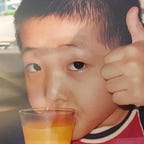To provoke the complex scale of community, as a practice in criticism and celebration.
Project Brief and Final Videos
For the final project for James Grady’s Motion Graphics elective at Boston University, we had to create a vignette series of three video clips (30–45 seconds) exploring non-linear narratives based on a vision of community.
Project Requirements
- Interpret the word ‘community’
- Create three 30–45 second videos
- Videos must intentionally loop
- Square format 1080x1080
- Stay away from stock footage — use video you have captured and/or animated in After Effects
- Videos will be posted to shared Instagram page @bu_gd_576
We had to one or all of these word in some way in each video: community, association, center, company, district, nation, neighborhood, people, public, society, state, colony, commonality.
This final motion graphics project allowed me a time to experiment conceptually and technically, and I’m glad I had the space to explore it.
Ideation/Direction
The words I were drawn to were colony, neighborhood, and association.
My dialogue on community, especially since the beginning of this semester, has been centered on how our communities are interconnected webs that have clear beneficiaries and exploited members. I actually did a book project earlier in the semester about margins in our society in Junior Graphic Design studio that related to the act of folding pages to reveal new frames for reference on margins. Guided by these thoughts, I saw ‘colony’, specifically ant colonies, as metaphors for castes, invasion, demography, and shifting landscapes.
Thinking on how non-linear narratives don’t have an exact beginning and end, I was thinking my vision for community was how the positive and negatives ultimately represented ‘community as storytelling narrative’. As I conceived of metaphors like ants (colony) and tattoos (neighborhood) and words (association) as insight into the hopes for what community could look like in the future, I had too many ideas and needed to find a thread.
I first established a goal for the three videos: ‘to provoke the complex scale of community as practice in criticism and celebration!’. Formally, I was inspired by Rorschach ink blot tests. These were a type of projective personality test where people observed these ambiguous stimuli in ink blots. This mirrors my ideas for how the blurry lines of community allow us to flit back and forth with its interpretation. To me, we ultimately project into our communities for what we want to see, for better or for worse.
I wanted to use my own writing this time, and see how to incorporate into the motion. I wanted to translate dynamic copy and fast pace visuals into kinetic typography, and focus on the impression of the visual and words. I was looking into animating variable typography as liquid type!
But ultimately James advised me to focus on how the language might be brought in as a layer of audio that brings meaning into the visuals. I went down the route of using the Rorschach as source of a “beautiful, formally executed” imagery — satisfying videos that illustrate my ideas.
Execution/Technique
From there, I started focusing on how to animate an inkblot. I looked into tutorials, but they weren’t quite right for my purposes because the motion felt choppy and one-dimensional.
But then I found a unique tutorial for creating this inkblot effect using Trapcode Particular, a plug-in for creating 3-D particle systems in space and manipulate the physics and expression. So then it was about learning this new plug-in to manipulate the effect for what I wanted.
Imagery/Colors
Both aesthetically and conceptually, Charles and Ray Eames’ “Power of Ten” became a strong source of inspiration. This transcendental 70s short film and educational piece zoomed in and out of our existence to reflect on its size and matter. From 4:47 —
“This lonely scene, the galaxies like dust, is what most of space looks like. This emptiness is normal; the richness of our own neighborhood is the exception.”
The narration on it also helped me focus on analog expressions of sound and visual fidelity as a source of intimacy with the audience: how a familiar, warm crackling sound could entrance the audience. I began to record my own voice, but also considered how to create an analog sound through processing the audio’s equalization through Audacity and using stock audio for the audio effects.
For me, a newfound consideration in video was the grid—especially for the type to exist on. This live, active particle system needed to sit well on a compositional level too, despite its morphing form.
The colors and forms were inspired by the 60s and 70s, from when these somewhat ‘pseudo-scientific’ projective methods were implemented. Psychedelic colors inspired by Summer of Love posters that defined the aesthetic of the era. Mandala, kaleidoscopic movements. Also a pleasant surprise was finding out that these Rorschach inkblot tests were actually mostly in color, and the black and white known in its cultural context is actually so that people wouldn’t form initial biases when they viewed the projections.
